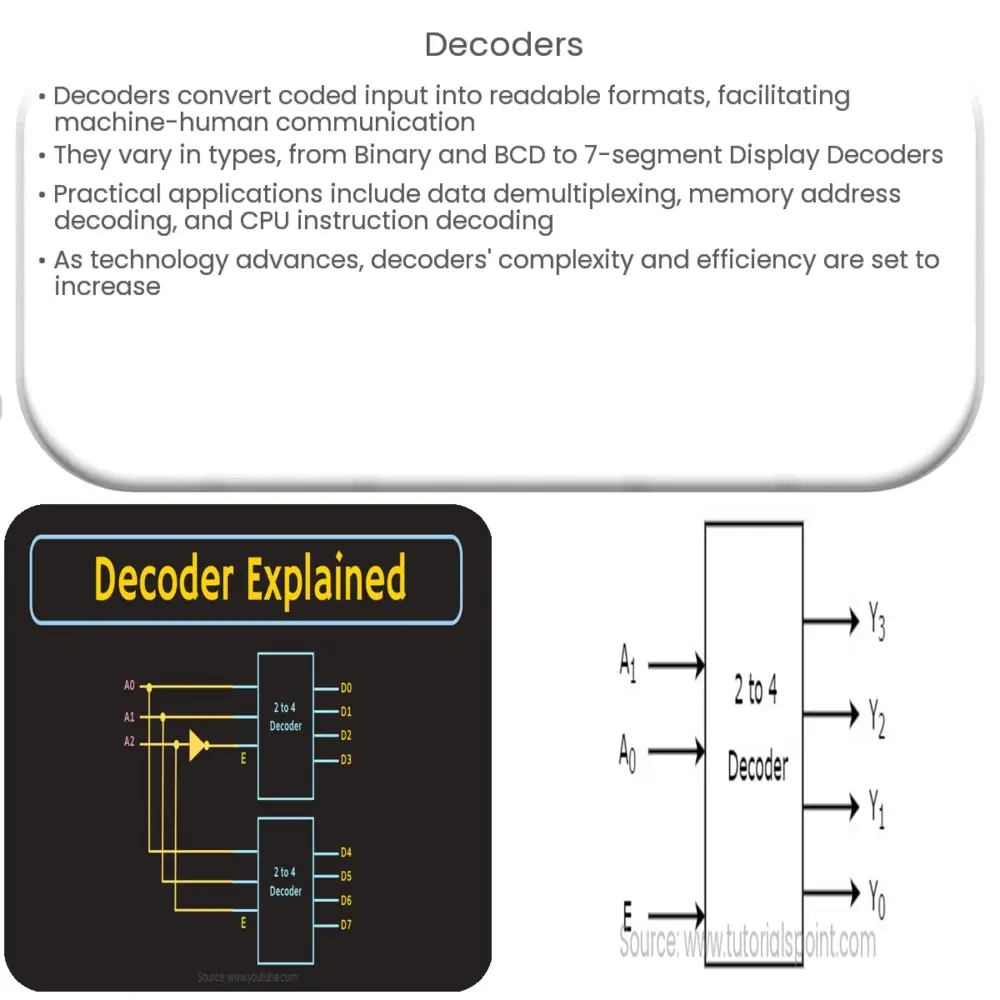Explore the world of decoders, their types, workings, and practical applications. Understand their vital role in digital technology.

Decoding the World of Decoders
In the vast sphere of information technology, the term ‘decoders’ is a common one. Decoders play a pivotal role in facilitating communication between machines and humans, breaking down complex code into human-readable language and vice versa. Before we delve into the intricate world of decoders, let’s first try to understand what a decoder is at its most fundamental level.
A Brief Overview of Decoders
A decoder is a type of combinational circuit that converts coded input into coded output. Its job is to transform n-bit input code into a maximum of 2^n output lines. The selection of a particular output line is controlled by the input combination.
For instance, consider a binary to octal decoder. Here, the input will be a 3-bit binary number, and the decoder will provide an output on one of the 8 (2^3) output lines, depending on the input number.
Types of Decoders
Decoders come in a wide range of types, each suited to a different purpose. A few common types include:
- Binary Decoders: As the name suggests, these decoders take a binary input and decode it into a corresponding output.
- BCD to Decimal Decoders: These are used to decode binary-coded decimal (BCD) numbers into their corresponding decimal numbers.
- 7-segment Display Decoder: This type of decoder is commonly used in digital clocks and calculators to convert binary numbers into specific patterns that light up the correct segments of the display.
Practical Applications of Decoders
Decoders find myriad applications in real-world scenarios. From everyday gadgets to complex industrial machinery, they are everywhere. Let’s look at some of the applications:
- Data Demultiplexing: Decoders are used in data demultiplexing, which involves dividing a single input signal into several separate output signals.
- Memory Address Decoding: In computer systems, decoders are used to identify specific memory locations for data retrieval or storage.
Memory Devices:
Memory devices like RAM and ROM utilize decoders for their operation. A decoder helps in selecting a specific memory cell in these devices.
Instruction Decoding in CPUs:
In CPUs, decoders translate the encoded instruction into control signals that perform the desired operation on the CPU’s hardware.
How Decoders Work
At its core, a decoder is a complex logic circuit designed with the help of logic gates. The purpose of a decoder is to detect a specific combination of bits in the input and, based on that, trigger a specific output line. This might sound straightforward, but the underlying process can be quite complex, especially in advanced decoders that are used in modern computing systems.
- Input: The decoder receives a binary code as its input.
- Processing: The decoder processes the input using a combination of logic gates.
- Output: Depending on the input, one of the output lines is selected and activated.
These steps might vary in detail and complexity, depending on the type and purpose of the decoder.
Conclusion
In conclusion, decoders play an integral role in the world of digital technology. They serve as the backbone of various devices, helping to translate digital signals into a format that other components or people can understand. Whether it’s decoding instructions in a computer’s CPU, converting binary information for a 7-segment display, or aiding in memory retrieval, the importance of decoders cannot be overstated.
As technology continues to evolve, so too will the capabilities and complexity of decoders. Future advancements may bring about decoders with even greater speed and efficiency, further improving the functioning of digital systems. Therefore, it becomes essential for us to understand and appreciate the complex yet fascinating world of decoders.

